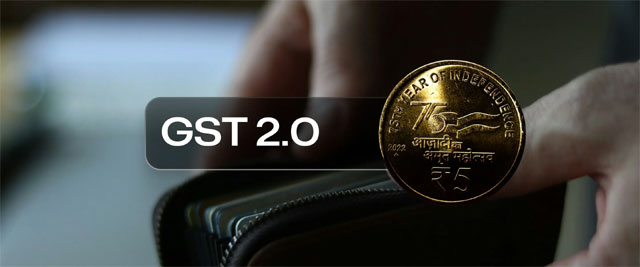Daijiworld Media Network - Mumbai
Mumbai, Sept 2: India’s consumption story, long subdued by inflation and economic uncertainty, may be poised for a significant turnaround, thanks to a trio of positive developments: the anticipated rollout of GST 2.0 reforms, a rebound in rural incomes, and cooling inflation, according to a new report by Wright Research, an investment manager on smallcase.
The study suggests that the country's consumption cycle — stagnant in recent years — has likely bottomed out and is beginning to gain traction. If the next phase of GST reforms is finalized in October, just before the festive season, it could deliver a timely boost to household demand.

What GST 2.0 Could Change:
Among the key proposals being considered:
• Essential items like processed foods, affordable footwear, and select wellness products (currently taxed at 12%) may move to the 5% slab, making them more affordable.
• High-value goods such as air conditioners and large TVs may see GST rates cut from 28% to 18%, leading to price reductions of up to 8% — a move that could drive sales in Tier-2 and Tier-3 cities.
• Cement, currently also at 28% GST, may be reclassified into a lower bracket, reducing costs for both individual homebuilders and large-scale construction.
These changes are expected to not only lower consumer prices but also encourage a shift from unbranded to branded goods, fueling more formal-sector consumption.
“GST 2.0 represents one of the most pro-consumption policy moves in recent years,” said Sonam Srivastava, Founder of Wright Research. “By reducing prices across both everyday goods and big-ticket items, the reform could accelerate demand just as rural incomes rise and inflation eases.”
Sectoral Impact:
• FMCG revenue is projected to grow nearly 10% in FY26.
• Consumer durables could see over 21% growth, depending on reform speed.
• Cement companies may see the biggest lift, with EBITDA rising 40% and profits potentially jumping 80%.
• Digital platforms are expected to benefit as MSMEs continue to digitize, with revenue growth projected at 35–40%.
• Oil marketing companies are likely to see improved cash flows, aided by lower global crude prices.
Early Signs of Recovery:
• FMCG giants, paint manufacturers, and quick-service restaurants have already reported volume growth in Q1 FY26.
• Retailers in smaller towns are seeing faster sales momentum, signaling rising discretionary spending in non-metro markets.
As festive season approaches and macro conditions improve, GST 2.0 could act as the final push toward a full-fledged consumption revival in India’s economy.